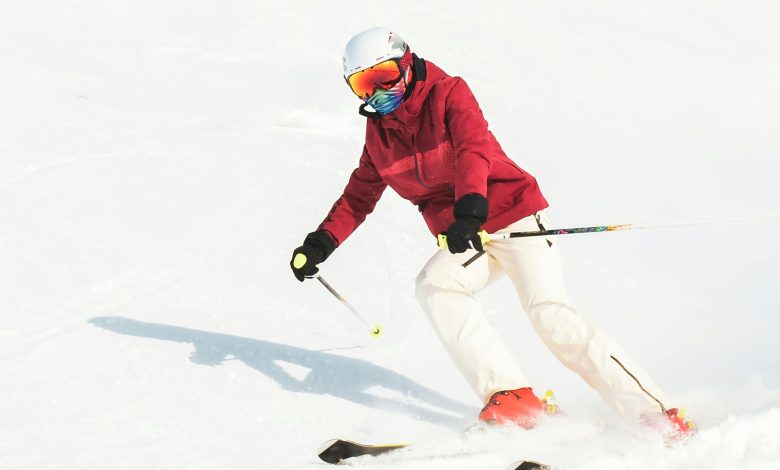Layering 101: How to Stay Warm and Dry on the Slopes

Staying warm and dry is important for comfort and performance when it comes to snowboarding and skiing. Clothing can be the difference between a fun day on the slopes and one that is spent in the lodge shivering. Layering is the key to dressing for winter sports. This technique not only keeps you dry but also warm, no matter what the weather is.
This guide will explain the importance of layering, including how to mix base layers, mid layers, and outer layers. The goal is to maximise comfort and protection from the elements. You can find a detailed guide to what to wear skiing at Naski Sports, a ski shop that is known for its extensive selection of winter sports equipment.
Understanding the Importance of Layering
The technique of layering involves wearing several layers to regulate your body temperature, control moisture and protect you from wind and snow. When combined correctly, each layer has a purpose and will keep you warm and dry all day long on the slopes.
Three-Layer System
Three-layering is the most effective method of layering for skiing and snowboarding. This system is made up of three layers: a base, a middle layer and an outer one. Each layer has a specific function.
- Base Layer: Moisture Management.
- Insulation: Mid-Layer.
- Outer layer: Weather protection.
Base Layer: The Foundation of Comfort
Base layer: This is the layer that is closest to your skin. Its primary purpose is to remove moisture from your body. Your body produces heat while you ski or snowboard. This can lead to sweating. This moisture can cause discomfort in cold weather and even hypothermia if it is not managed properly.
Materials to Look for
Focus on choosing materials that are moisture-wicking as well as quick-drying when selecting a base layer. The most popular materials are:
- Merino Wool: Merino Wool is popular for base layers because of its moisture-wicking and natural odour-resistance. It is also highly breathable and offers insulation when wet.
- Synthetic fabrics: Polyester or nylon blends can also be used as base layers. These materials are lightweight and durable. They also wick moisture away from your skin very effectively.
Fit and Function
The base layer should be snug against the skin, but not too tight. The fabric can effectively wick away moisture from your skin by fitting snugly.
Middle-Layer Insulation for Keeping You Warm
This layer is responsible for insulation and traps body heat in cold weather. This layer is between the base and outer layers and can be adjusted according to the temperature and activity level.
Materials to Consider
The mid-layers are made of different materials that offer different levels of warmth, breathability and comfort.
- Fleece: The material fleece is lightweight, breathable and provides excellent insulation. This is a good choice for people who want warmth without the bulk.
- Down: Down is a very warm insulation material, which makes it perfect for cold weather. You must know that down insulation properties are lost when it gets wet. This is why it’s better to use it in dry conditions, or with an outer waterproof layer.
- Synthetic insulation: Synthetics like PrimaLoft provide warmth similar to that of down, but still retain their insulating qualities even when they are wet. They are therefore a good choice for a variety of weather conditions.
Layering Options
You can choose a fleece, down or synthetic-insulated jacket as your mid-layer, depending on how warm you want to be. You can choose multiple mid-layers on colder days to improve insulation.
The Outer Layer: Protecting You from the Elements
This outer layer is also called the shell layer and it’s your first line against rain, wind, and snow. This layer is waterproof, windproof and breathable to keep you dry and comfortable no matter what the weather.
Types of Outer Layers
You can choose between different outer layers, each of which is suited for specific weather conditions.
- Hard Shell jackets: These jackets provide maximum protection against harsh weather conditions. They are waterproof and windproof. These jackets are often made with Gore-Tex membranes or other waterproof and breathable membranes.
- Soft Shell jackets: Soft-shell jackets provide a good balance between breathability and protection. These jackets are more water-resistant than waterproof and therefore ideal for cold, dry conditions.
- Insulated jackets: Some outer layers come with insulation built in, combining functions of a middle layer and an outer layer all in one. These jackets can be used in extremely cold temperatures, but they are less versatile than separate layers.
Additional Features
Look for features that improve functionality when choosing an outer layer.
- Adjustable Headwear: An adjustable hood can be worn over a helmet to provide additional protection from the wind and snow.
- Ventilation: Pit zips and other ventilation options are available to help regulate your body temperature when you’re doing intense exercise, preventing overheating.
- Sealed Seams: Seams that are fully taped prevent water from leaking through the stitching. This ensures your jacket is waterproof.
How to Layer Effectively
- Avoid Cotton: Cotton is a moisture-absorbing fabric that takes a very long time to dry. This makes it unsuitable for skiing and snowboarding. For your base layer, choose materials that wick moisture away from the skin.
- Adaptability: Prepare to add or subtract layers based on the weather conditions and your level of activity.
- Don’t Forget Accessories: Along with your core layers of clothing, accessories such as gloves, hats and neck gaiters will help keep exposed areas warm.
Conclusion
Layering is key to staying comfortable, warm and dry on the slopes. You can customize your outfit and protect yourself from the elements by carefully choosing and combining the base layers, middle layers, and outer layers. You can enjoy your time on the slopes no matter what the weather is like by wearing the right layers.





